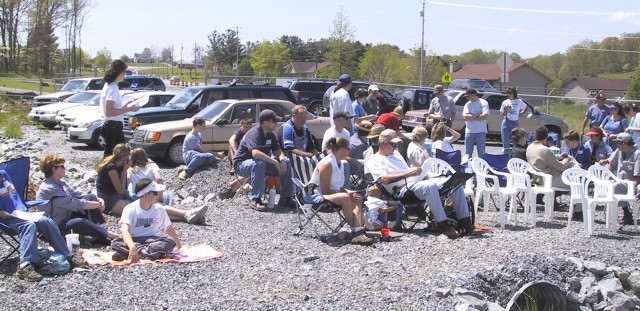
Members of the Gray Site group assemble, awaiting the site update presentation.
April 19, 2003 meeting at the Gray Fossil Site.

Members of the Gray Site
group assemble, awaiting the site update presentation.
Larry Bristol, On-Site Coordinator for the Gray Fossil Site was introduced by Steve Wilson, President of the Friends Group. He outlined some of the site’s physical facts, including that it may be one of the most important Miocene fossil sites in North America, and unusual in representing a fairly comprehensive sample of a forested ecosystem. While temperate species such as oaks and hickories were abundant, the climate of the time was likely subtropical, and may have been cooling and drying due to changes in global circulation patterns. There are up to 140 feet of potentially fossil-bearing material. Vertebrate fossils recovered include remains of shovel-tusked elephants (Gomphothere), rhinos (Teleoceras), tapirs, alligators, peccaries, fish, frogs, salamanders, snakes, turtles, bear, cat, a jackal-like animal, a small songbird and a large otter. Horses and camels, characteristic of plains grasslands and common in other North American Miocene sites, have not been recovered so far. The Teleoceras rhinos were relatively small, short-legged and semi-aquatic. The tapirs, the most abundant species, resemble the South American mountain tapir.
ETSU paleontologist Dr. Steven Wallace summarized the status of the grant. The $8 million ISTEA (Intermodal Surface Transportation Efficiency Act) Grant is coming through the Tennessee Department of Transportation from the federal government along with an additional $2 million in matching funds from ETSU. Plans for this money calls for the construction of a 50,000 square-foot facility with museum areas, research laboratories and classrooms. Preliminary design work is underway. Selling points used in obtaining the grant were the site’s proximity to a major transportation corridor, and the potential benefits for ETSU and the region. One of the most important was the likelihood of finding new species, due to the site’s geographic isolation from other Miocene sites and the abundance of small animals, which often have restricted geographic ranges. Dr. Wallace also showed those present plaster casts of some the fossils that he is using for teaching purposes. These are currently being made in middle Tennessee. The Friends Group may have a role in distributing the plaster casts for educational displays and traveling exhibits.
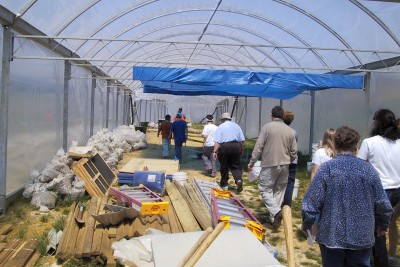
The members, split into two
separate groups, follow Larry Bristol through one of
the "greenhouse" shelters.
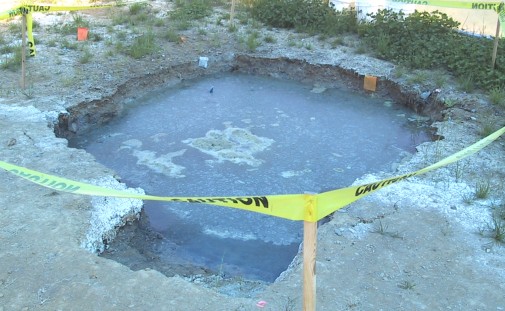
Within the shelter, an
unappetizing bathtub awaits, symptomatic of an ongoing difficulty
during
the rainy season. The excavation penetrates a nearly impermeable
clay cap placed over the area
by the Department of Transportation, into more permeable in-place
material. The ground surface
on top is not perceptably muddy. This is the test excavation
shown on the
summer 2002 activities page, with student workers.
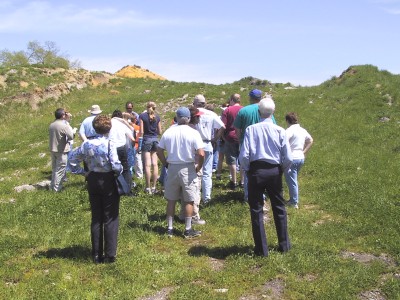
The first group, out on the
site.
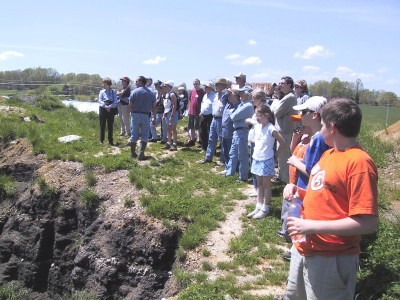
Overlooking the abandoned
highway excavation.
State of the Site, April 19, 2003
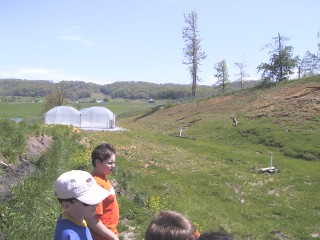 |
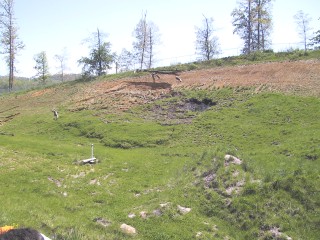 |
|
| View over expanse of site looking to the left, (southeast). | Slump. | |
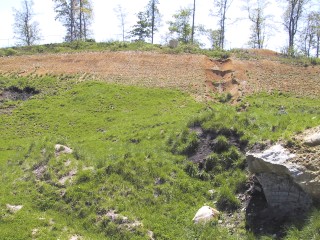 |
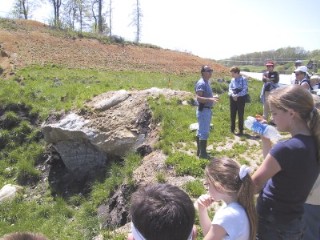 |
|
| Looking directly across at exploration step cut. | Larry Bristol pointing out specifics. | |
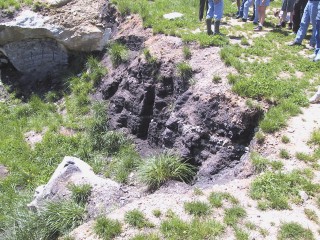 |
||
| Looking down and to the right (south). |
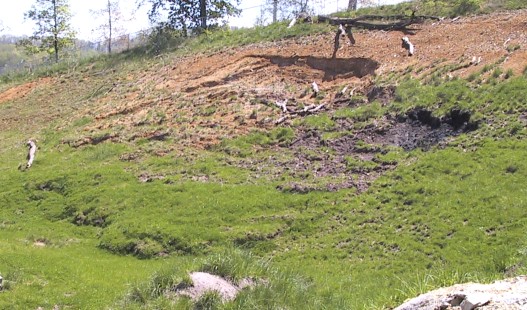
Detail of slumping, most of
which had occurred during the rains of February.
This would have been an ongoing problem, had the road been put in
this material.
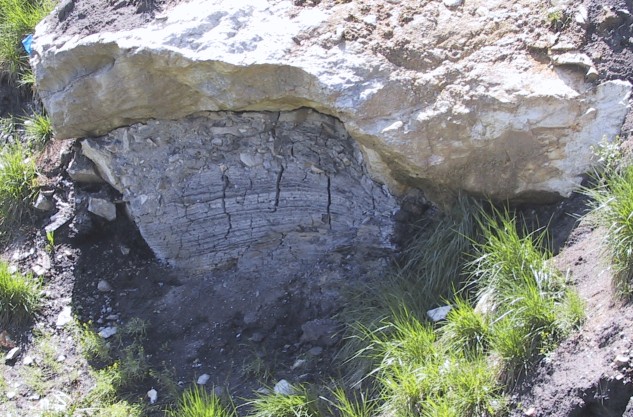
A car-sized block of
dolomite bedrock, this boulder sheltered fossiliferous sediment
since it was first unearthed.
Note rubble, deformation, and cracking due to dessication.
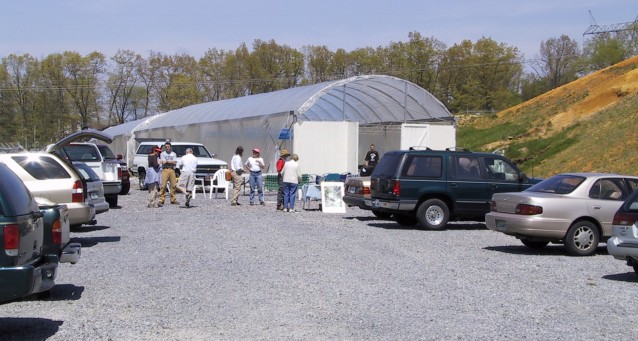
Post-meeting discussions.